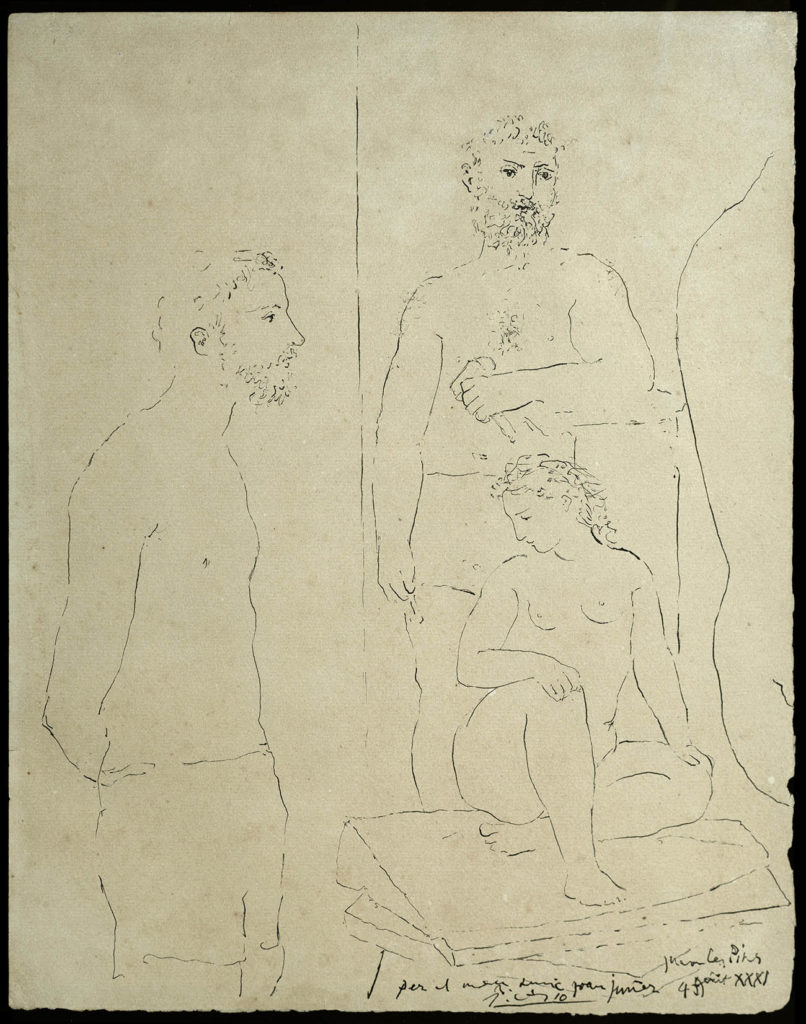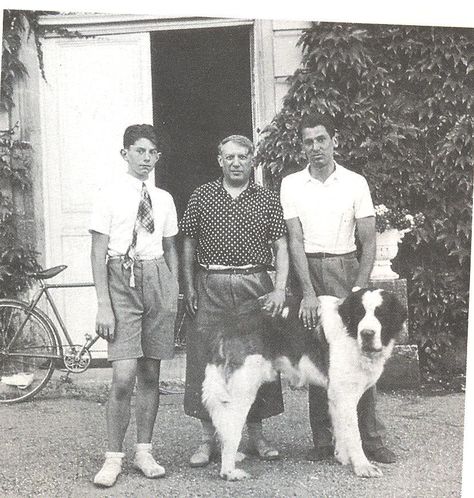Drawing of Picasso, the sculptor and the model.
One of the recurring themes in Picasso’s production was that of the artist and the model. We see it in the engravings of the Vollard Suite, in paintings from the sixties, and in ink drawings like the one at hand.
This original work by Picasso comes from the heirs of Joan Junyer, an artist very close to the Malaga painter, whom we see here represented together with the painter and Maria Thérèse Walter, Picasso’s muse and partner in those years (the drawing is dated 1931). From Junyer and Picasso’s friendship there are infinite letters and gifts such as this drawing that the master dedicates to his protégé.
The three characters are deep in their own thoughts, and their gazes don’t meet. Junyer’s bearded, smooth-featured profile stands out in the right foreground. In the second place, the nude muse cocks her head in a pensive attitude, and behind her Picasso represents himself as a young artist. The undulating line that shapes the bodies with great expressive economy reveals to us that he is living a happy and relaxed stage. Away from the expressionism and cubism of his youth, he has entered a stage permeated by a classicism of Mediterranean roots. With the theme of the sculptor and his model, Picasso reflects on the unsolvable conflict between art and life.
Despite the fact that at the beginning of the 1930s, Picasso was courting the surrealist trend in his best-known works, drawing was always for him a more private and intimate way of keeping away from avant-garde experimentation, which is why drawings like the one that occupy us enjoy a timeless and eternal cadence.

PABLO PICASSO (Málaga, 1881 – Mougins, France, 1973) Creator of Cubism along with Braque, Picasso’s painting marked a turning point in the history of art. He began his studies in 1895, at the Provincial School of Fine Arts in Barcelona, and just two years later he held his first solo show, at the café “Els Quatre Gats”. After several short stays in Paris, Picasso settled permanently in the French capital in 1904. After his blue and pink periods, developed in the early years of the century, the painter began his geometrical tests in 1906, during a stay in Lleida. A year later he began to paint “The young ladies of Avinyó street”, and in 1909 he came into contact with Braque and his cubist period began. During the second decade he developed his classical stage, and made his famous sets for Diaghilev’s Russian ballets. In 1936 he was appointed director of the Prado Museum by the Government of the Spanish Republic, and a year later he painted the “Guernica”. The definitive international recognition will come in 1939, as a result of the retrospective that the MOMA in New York dedicates to him. During the following decades anthological exhibitions will be dedicated to him around the world, in Rome, Milan, Paris, Cologne and New York, among many other cities. It is represented in the most important museums around the world, such as the Metropolitan, the MOMA and the Guggenheim in New York, the Hermitage in Saint Petersburg, the National Gallery in London or the Reina Sofía in Madrid.



